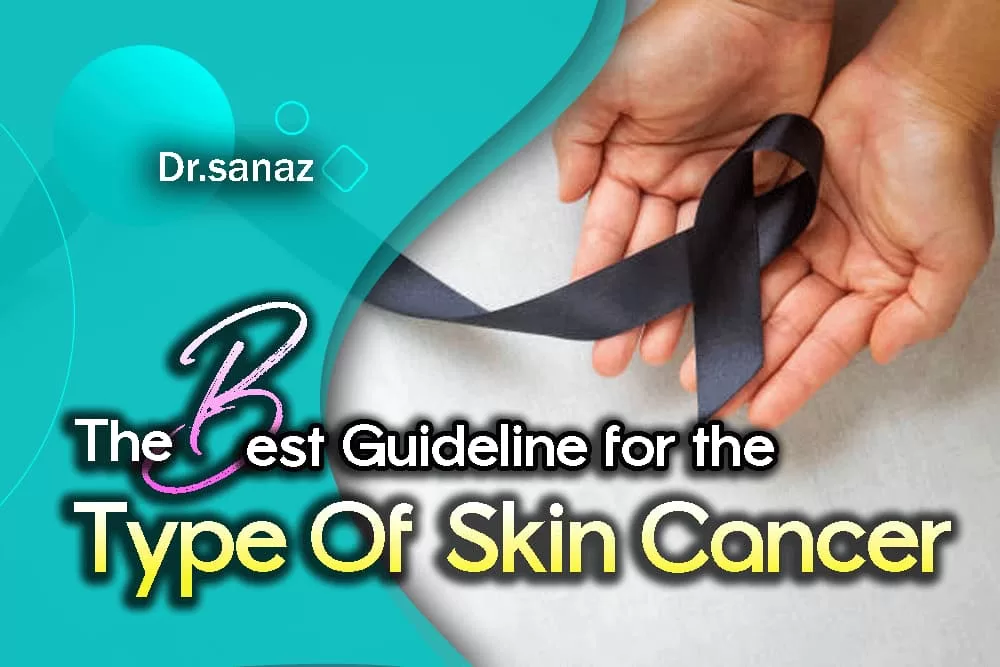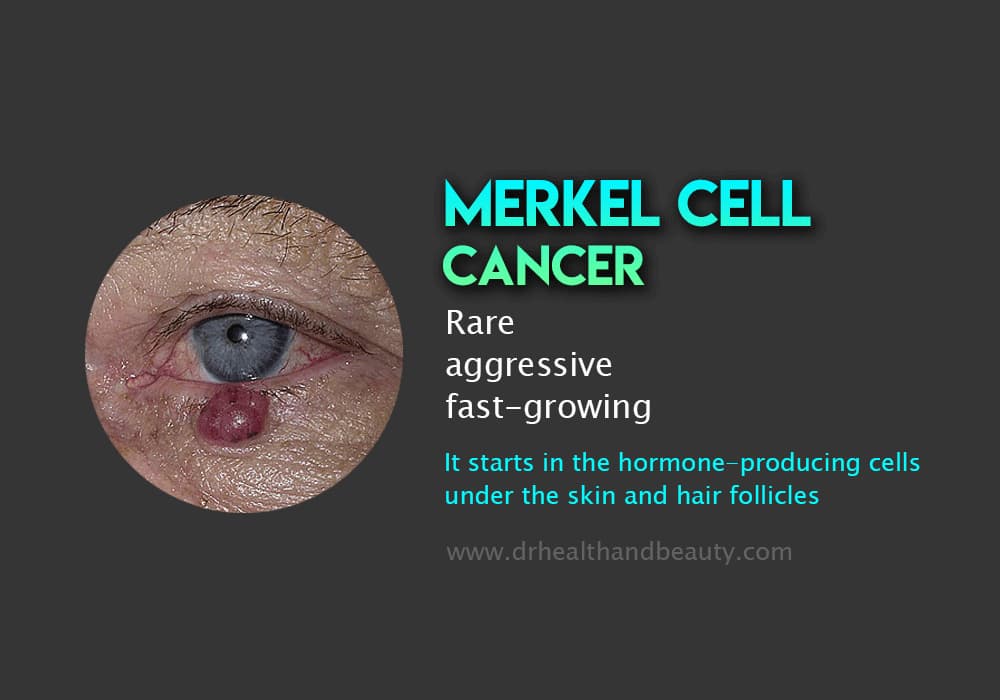

The Best Guideline For The Type Of Skin Cancer
Table of Contents
The skin is the largest organ of the body. The most common cancer among all cancers is skin cancer. Some type of skin cancer is diagnosed in more than 3 million people in the United States annually.
Cancer occurs when normal cells change shape, growing abnormally and multiplying without standard control. As the cells multiply, they form a mass called a tumour. Skin tumours are often referred to as skin lesions.
Related: “Skin Blemishes To Worry About/ Comprehensive Guide“
Tumors are considered cancerous only if they are made up of malignant cells. This means they invade nearby tissues due to their uncontrolled growth.
Tumours may also spread to distant organs through the bloodstream or lymphatic system.
The skin is the largest organ of the body. It protects the body from infection and injury and helps adjust body temperature. The skin also maintains water and fat and produces vitamin D.
Related: “How To Prevent Viral Infections?“

Be familiar with skin layers:
- Epidermis: The outer layer of the skin
- Derm: The inner layer of the skin
- A deep layer of fat
Skin cancer is an unusual growth of skin cells that is often seen on skin that has been exposed to sunlight. However, this cancer can progress in areas of your skin that are not normally exposed to the sun.
Main types of skin cancer
Types of skin cancer:
Basal cell carcinoma
Basal cells are circular cells found in the lower epidermis. About 80% of skin cancers are caused by these types of cells. These cancers are described as basal cell carcinoma. Basal cell carcinoma most often evolves on the neck and head, although it can be found anywhere on the skin. This condition is mainly caused by exposure to sunlight or occurs in people who have received radiation therapy as children. This type of skin cancer usually slowly grows and rarely spreads to other body parts.
.Related: “How To Prevent Sunburn Without Sunscreen? “

Squamous cell cancer
Most of the epidermis comprises flat, scale-like cells called squamous cells. About 20% of skin cancers arise from these cells, called squamous cell carcinoma. Squamous cell carcinoma is mainly created by sun exposure, so it may be found in many areas of the skin. This type of skin cancer can also occur on skin that has been burned, damaged by chemicals, or exposed to X-rays.
Squamous cell carcinoma is usually seen on the lips. In place of long-term scars; and on the skin outside the mouth, anus, and vagina. About 2 to 5 per cent of squamous cell carcinoma spreads to other body parts.
Related: “Facial Pimple Treatment /Feeling Happy“

Merkel cell cancer
Merkel cell carcinoma is a very rare and aggressive or fast-growing cancer. It starts in the hormone-producing cells under the skin and hair follicles. This type of skin cancer is usually found in the head and neck area. Merkel cell carcinoma can also be called neuroendocrine carcinoma of the skin.
Related: “How To Wash Seborrheic Dermatitis Scalp?“

Melanoma
Where the epidermis meets the dermis, There are scattered cells named melanocytes. These cells produce the melanin pigment that gives the skin its colour. Melanoma, as a type of skin cancer, starts in melanocytes and is the most severe type of skin cancer. It allocates about 1% of all skin cancers for itself.

Basal cell carcinoma and squamous cell carcinoma
Sometimes, they are grouped and called keratinocyte carcinoma. This is because they start in a skin cell called a keratinocyte.
Related: “How To Cure Ocular Rosacea Naturally?”
Lesser-known types of skin cancer
Kaposi’s sarcoma
This type is a rare type of skin cancer that spreads in the skin’s blood vessels and leads to purple or red spots on the skin or mucous membranes. Kaposi’s sarcoma is mainly seen in people with weakened immune systems, such as AIDS, or patients taking immunosuppressive drugs (such as those with organ transplants). Other people at risk for Kaposi’s sarcoma include young men living in Africa, elderly Italians, or Eastern European Jews.
.Related: “Why do I get freckles even with sunscreen?“
Merkel cell carcinoma
Merkel cell carcinoma results in complex, scaly bumps on the skin or just under the skin in the hair follicles. Merkel cell carcinoma is most often seen in the head, neck, and trunk.
.
Sebaceous gland carcinoma
This unusual and aggressive type of skin cancer occurs in the sebaceous glands of the skin. Sebaceous gland carcinomas—which often appear as painless, firm bumps—can occur anywhere but are most commonly seen on the eyelids and are often mistaken for other eyelid problems.
Related: “How To Get Rid Of Eye Bags (Spuffy Bags Under The Eyes )“
It should be noted that There are several other rare types of skin cancer, including cutaneous lymphoma, Kaposi’s sarcoma, skin adnexal tumours, and sarcoma, all of which are classified as non-melanoma skin cancers.
Related: “How To Reduce Nose Swelling Rosacea?“

How is skin cancer diagnosed?
You don’t have to memorize a long list of symptoms to find skin cancer in your body. Dermatologists summarize the necessary things to check as follows, and if you notice such spots on your skin, you should see a specialist:
- Spots and moles that are different from other moles
- Changes
- It itches
- it bleeds
.
After you notice these symptoms for diagnosis, a biopsy will always be needed for an accurate diagnosis of skin cancer.
When you visit a dermatologist because of seeing a suspicious spot on your body, the relevant specialist will carefully examine you.
If he determines that your spot is cancerous, he will remove all or part of it from your body. This can easily be done during your appointment with your doctor.
The procedure your dermatologist uses to remove the spot is called a skin biopsy.
A skin biopsy is essential because it is the only way to detect skin cancer, and there is no other way to be sure of its occurrence.
The section that the dermatologist removes from your skin will be examined under a microscope.
The attending physician places the removed skin under observation to detect cancer cells.
If cancer cells are found, the biopsy report indicates what type of skin cancer cells were found in your skin, but if no cancer cells are found, the biopsy report will describe what was seen under the microscope.
Related: “Collagen Benefits For Hair And Skin“
Risk factors
Any type of Skin cancer occurs due to an error (mutation) in the DNA of skin cells, which causes the uncontrolled growth of cells and creates a mass of cancer cells.
Ultraviolet (UV) rays, present in the rays of sunlight and the lights that are used in tanning beds, cause the most damage to the DNA of skin cells.
Other conditions, like exposure to toxic substances or conditions that weaken the immune system, may increase the risk of skin cancer.
Other factors may increase the risk of skin cancer, which we will mention below:
- light skin
- History of sunburn
- Too much exposure to the sun without sunscreen and protective clothing
- Tanning the skin through tanning beds and lamps
- Living in high or sunny areas
- Having abnormal dysplastic moles or having too many moles
- Pre-cancerous skin lesions – actinic keratosis skin lesions
- (These pre-cancerous skin lesions are usually seen in the form of tricky and scaly spots, and their color varies from brown to dark pink.)
- Family history of skin cancer
- History of skin cancer
- Weakness in immune system (people who have a weak immune system, such as people with AIDS/HIV and people who use immunosuppressive drugs to receive a transplanted organ)
- Exposure to radiation (people who have undergone radiation therapy to treat skin diseases such as eczema and acne)
- Contact with certain substances, such as arsenic
Conclusion
Many people with any type of skin cancer are treated in the dermatologist’s office. This happens even after three years of treatment in patients who have relapses. So, follow your skin as recommended by your doctor. If you suspect a particular symptom, immediately see the best dermatologist or dermatopathologist.
If you have more profound or advanced malignant melanoma, metastasis or tumour, or actinic keratosis, your oncologist may want to see you every few months. These visits may include full-body skin examinations, regional lymph node examinations, and periodic chest X-rays. Over time, the intervals between subsequent appointments increase. Finally, these reviews may be done only once a year.


2 Responses
Thanks for sharing. I read many of your blog posts, cool, your blog is very good.
Thank you for reading.
Don’t hesitate to let me know, if you have any health or beauty issues, so I can help you based on academic research.